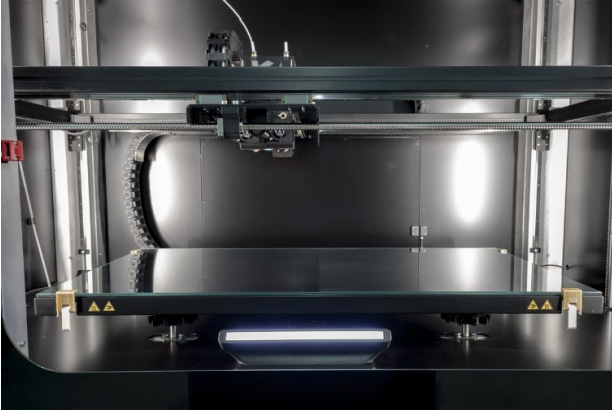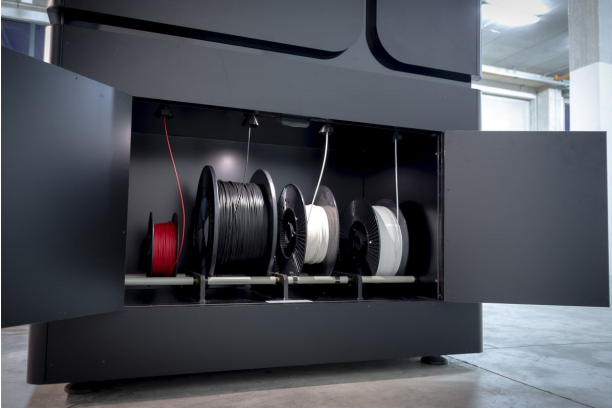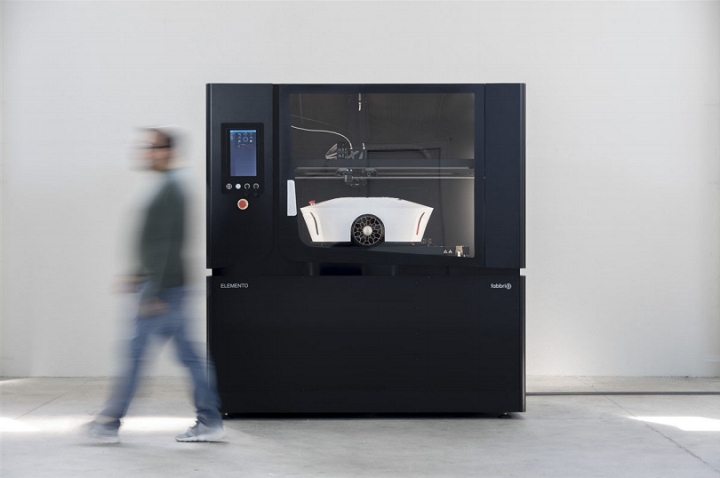Italian 3D printer manufacturer Fabbrix introduced the second update to its ELEMENTO 3D printer series last summer, and now it’s back with another update: the ELEMENTO v2.1. This updated, large-format FFF 3D printing solution is the direct result of three years worth of development by the Fabbrix team and, according to a blog post, “represents a reference point for industrial large‐format 3D printing.”
“Built with industrial high‐quality components, this Made in Italy combination of technology presents several advanced features, and it is designed to process different materials of engineering quality for the most demanding industrial applications,” Fabbrix wrote.
With a larger build volume of 1000 x 560 x 530 mm, the new ELEMENTO v2.1 is a bit bigger than its predecessor; makes sense, as the system was specifically designed for large industrial part printing. The printer also features a heated build plate, which is able to reach temperatures of up to 100°C. This plate, coupled with the printer’s auto-leveling sensor that precisely maps the surface, makes it much more likely to achieve great adhesion of the first layer.
The ELEMENTO v2.1 has a closed chamber, which Fabbrix says is both thermally insulated and soundproof. The 3D printer’s active temperature control system helps in eliciting what the company calls “maximum performance” of the materials.
Speaking of materials, while Fabbrix does have its own line of engineering-grade 3D printing filaments, its new ELEMENTO v2.1 printer does come with an open filament system. This way, even if customers don’t have any Fabbrix materials, they’ll easily be able to use third-party materials for printing purposes.
In terms of safety, Fabbrix says that printer operators will be able to work with the ELEMENTO v2.1 “in complete safety,” due to receiving certification from CE Marking. The door of the printer features an automatic locking system, so no one can open the system and access it while the interior components are moving. In addition to its active temperature control system, mentioned earlier, the ELEMENTO v2.1 also has an updated air purification system, fitted with a HEPA filter H13, which, as Fabbrix says, “ensures an efficiency of 99.95% versus VOCs (volatile organic compounds) and UFPs (ultrafine particles).”
The system’s print head has a direct dual extruder, which, because of configurable and interchangeable hot ends that can reach 300°C, supposedly allows the printer to adapt to any production needs that may arise. The extruder lifting system is automatic, and it also features an anti-collision system as well. But back to those high-capacity, metal hot ends for a moment—thanks to a variety of differently-sized ruby nozzles that also “ensure optimal performances and maximum longevity,” the hot ends are capable of extruding fiber-reinforced technopolymers.
The new ELEMENTO v2.1 features the same Fabbrix Linear Technology as the previous two versions, which relies on ball-bearing screws for better, more accurate material deposition performance and faster production.
Finally, the printer has Wi-Fi connectivity, as well as an integrated camera and advanced graphic interface. All of this combined allows for remote print monitoring and control, as well as an intuitive user experience.
Additional specifications for the new ELEMENTO v2.1 include:
- 2.85 mm filament
- 0.6, 0.8, 1, and 1.2 mm nozzles
- 5 – 5 – 2.5 micron resolution
- 150 mm/second build speed
- LAN and USB port connectivity
- Ultimaker Cura / Simplify3D slicing software
“Due to its unique and elegant design, Fabbrix® ELEMENTO V2.1 integrates perfectly into any work environment and represents the professional device ideal for manufacturing large monolithic parts, unique and limited‐edition, dedicated to all the professionals in the sector,” the company wrote.
(Source/Images: Fabbrix)
Subscribe to Our Email Newsletter
Stay up-to-date on all the latest news from the 3D printing industry and receive information and offers from third party vendors.
You May Also Like
NSF Awards Kentucky $1M for Advanced Manufacturing
The National Science Foundation has awarded a $1 million grant to the University of Louisville for the Advancing Manufacturing and Building Construction Technologies (NSF AMT) project. This initiative is part...
3D Printing News Briefs, May 11, 2024: 3D Printed Stent, Tower, Sculptures, & More
We’re starting off with medical research in today’s 3D Printing News Briefs, as researchers in Korea used CT images and 3D printing to fabricate an educational simulator for a mastoidectomy....
3D Printing Unpeeled: Wind Turbines, Probiotics and Lenses
TPI Composites, ORNL and Ingersoll Rand are working to make wind turbine tooling segments that can be 18.3 meters long. These elements also include resistive wires that help keep the...
Tethon 3D Releases Cost-effective Bioprinter
Tethon 3D, known for its ceramic-loaded DLP materials, custom resins, and DLP 3D printers, has recently released a bioprinter. Vat polymerization printers like DLP systems have been widely used by...





































